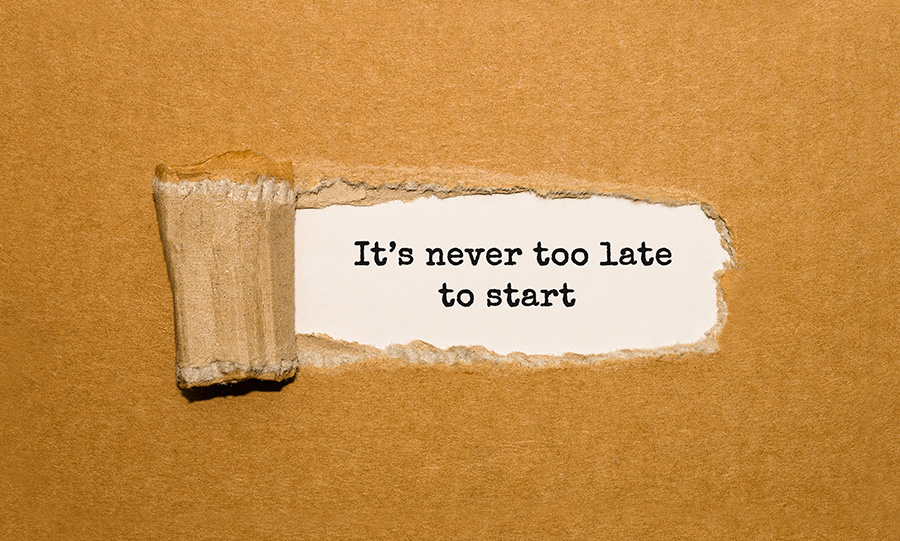
In the first two parts of this series, I covered what most who aren’t preparing consider to be the only things they need.
Nothing could be farther from the truth. Besides having a Group to team with, the last section of prepping is Communications.
I hope, at this point, you are starting to see the need for more people than just yourself trying to weather any disaster in the long term. The “Lone Wolf” is an excellent basis for a story, but there are just not enough hours in a day for one person to do it all. The Communications section of preparing is time and labor-intensive and requires a specialist attitude just like the Security and Sustenance sections. It isn’t sexy or glamorous, but like washing dishes, so you don’t get sick, it is a lifesaver.
Communications….and why?
If you spent any time in the military, and it doesn’t matter what military, you learned there were two sources of information which were infallible.
The first was an Officers driver because they heard everything, and most of the time, the higher the rank, the better the information. Once you had information, you could combine it with other things you observed and develop Intelligence.
The other way, which was my preference, was the guy no one talked too—the radio operator in the back office or tent at the CP (command post). When you made friends with this guy, you never let him drink alone. He was the man when everyone was asking drivers and getting nothing but dirty looks; the RTO(Radio Telephone Operator) was willing to talk. The prepper equivalent is the communications room in your group’s inner sanctum.
With your properly constructed listening post, you will be able to pull information out of the air and develop plans of action for your safety or to acquire supplies before the average person or group has any idea what is going on.
This has real-time uses today and in the future.
In every part of prepping, the need for local communications, alternate power, and the ability to listen more than you speak will provide dividends in the end.
The first step in your communications plan should be Alternate Power, which applies to all other areas of prepping.
Alternate Power
This area is vast, with entire books written about ways to get off the grid. And as much as the idea appeals to me, it just isn’t practical for most people in America today. I am going to base the first part of this section on the homeowner and then on renters. If you live in a high-rise building, there will be things for you here as well.
Generators
The ultimate for most preppers would be a generator/solar/wind power system. And the best, in my opinion, for generators is the dual-fuel models which burn gasoline or diesel and have the ability to be switched to either propane or natural gas.

Rainier R12000DF
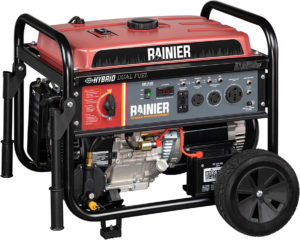
In normal use, 9500 watts will be overkill for the Commo shack, as well as running freezers, refrigerators, and washing machines. You should also have a battery bank to run your communications gear at night because more of the useful frequencies in ham radio are open at night. More on this later.
Pay your favorite electrician to install this switch. Have him wire in only the circuits you need, besides the kitchen and communications room. This will keep the actual wattage run off the generator lower than its rated number and reduce strain on the generator.

Connecticut Electric
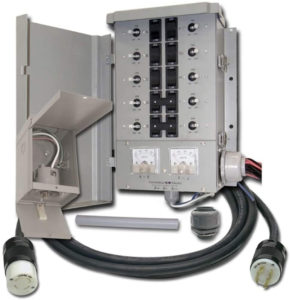
I have this exact setup for my home. It is effective and doesn’t take up much room on an empty wall; the generator easily plugs in after wheeling it outside for the day’s battery charging, cooking, and running the clothes washer. The generator burns the same fuel running one light bulb or three rooms of appliances, so get everything ready to go and fire it up. I generally try to have all the work I will do ready to plugin, start the generator and plug it into the circuit box, then turn on the breakers one at a time to power up critical areas. Especially important are cordless tool batteries and electronics which need maintenance charges every day.
If you intend to use a switch like this, make sure the generator you buy has a 30 Amp outlet for the supplied cable to plug into. It makes life so much easier.
Under NO circumstances, try to plug an extension cord to the generator and then to an outlet inside your house. You can easily burn down your house and kill an electrical worker outside on the lines as it will charge the lines leaving your home.
I do not have appliances or high drain items on the battery backup. However, I do have inverters available, so if I’m unable to run the generator, I can still keep freezers running, at a minimum.
Apartment dwellers and renters
Obviously, without room or the ability to make permanent alterations, your options are limited. However, you do have options.
If you have a balcony or large window, a small generator set running during the day will be lost in the noise of an urban area. With portable battery packages, you can do fine short term, while you make a better plan in case water gets shut off longer than your stores allow.

Rainier R2200i
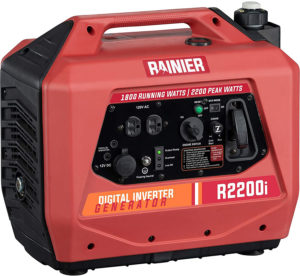
A modified exhaust will be needed to route exhaust gasses out of your living spaces. Do not fail to do this. This gen-set has 110- and 12-volt connectors to charge batteries as well as run small appliances. In small spaces, I would run nothing but freezers and charge batteries.
There is significant danger using a combustion engine inside a dwelling, always open all windows and route exhaust gasses out of your home.
Battery back-ups
There is literally a book of options, so I will keep it as simple and easy as possible because fixed battery banks are basically immobile, and for the short term, the portable systems work well. The portable options are also easy to move from the kitchen running freezers to the communications room if you have fewer than you perceived a need. There is always something you’ve forgotten; it happens to us all.

KYNG
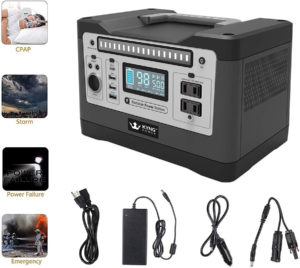
I like these because they are quick to move, will charge from an outlet or generator, and are light enough smaller members of the family can lift them. They are not perfect but used wisely; they can power your communications gear.
They can also be charged with compact solar panels, which makes these a favorite for preppers wanting portable power options.
Solar
For new preppers, the first thing they think about is a solar system for their home, after they start laying in significant food supplies. In this case, education is worth more than gold.
Solar systems work in 3 ways.
The most common is called grid-tie. This is the power company charging you to put solar panels on your property. Sorry but that’s the gist of it. It will lower your electric bill somewhat eventually.
Then you have grid-tie with battery back-up. This is much more expensive for the homeowner but works to provide power to your home when the power fails. Unlike the grid-tie, which provides no power to your home, just to the grid. This comes as a shock to most when they research grid-tie options.
The last is what most think a solar system is, and it can be very simple—a battery box like shown above and a portable solar panel. As long as you are willing to work with the limitations, I think it is an excellent beginning for a solar system.
The goal, of course, is to start small and build your system as you can afford it over time. The panel you buy for the battery back-up can be integrated into a larger system and more battery storage over time as you build a totally off-grid powered home or retreat.
If you have funds available, all you need with this system is the pole for the windmill and a battery back-up storage system. Mount the panels on the roof or build your own mount from treated lumber or galvanized pipe.
Of course, consult with an electrician before hooking up anything to the panels or your house, you can make mistakes which are very expensive with solar power.

ECO LLC 1500W
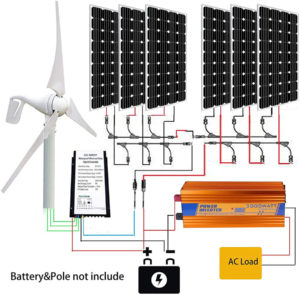
Now, finally, we can talk about communications.
If there is a universal rule in radio, it will go something like this.
You will always get the problem you paid for, or
Anecdotal good results should not reinforce a bad decision.
In short, if you buy crap, don’t expect it to get better when you need it most.
Your Communications Library
National Interoperability Field Operations Guide
Buy this book first! Before you waste a ton of money without knowing what you are doing.

Ham Radio For Dummies
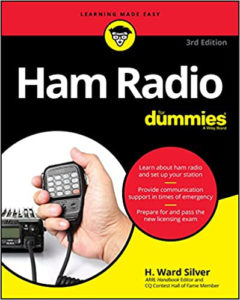
Then buy these 2

The ARRL Ham Radio License Manual
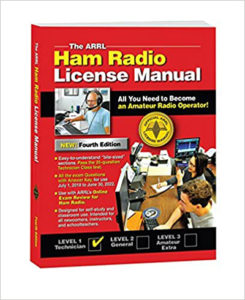

The ARRL General Class License Manual
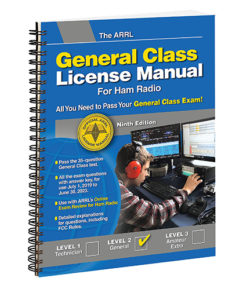
There are three levels in amateur radio licensing. You only need a Technician and General for most communication needs.
Nothing in communications is plug and play no matter what the sales brochure says, so you might as well accept that upfront. Before you buy anything, engage your frontal lobe and learn first; determine what you NEED to do, then what you want to do.
Another ugly truth, everything in communications having value has a ham radio license attached to it.
To learn about using the radio, the capabilities, and beyond that the limitations, you have to open your mind and learn. The easiest way to do that is by joining your local ham radio club. There is a list of reasons, which I’m sure the locals really don’t need to know upfront.
You are there to learn and get your license. That’s what you tell them and stay with that. They will like that.
What people, even long-term preppers, don’t know without the knowledge of ham radio is the gold. There are groups inside most radio clubs that are tasked at the local to federal levels in communication support. ARES and RACES provide radio support to Emergency Services (ES) in disasters.
Effectively what this means. Very few govt agencies invested in battery backups for their communications equipment. Yes, they go back to the radio stone ages when the power is out. There are the groups listed above, ARES and RACES, which mobilize to provide communications to the agencies requesting. It also means all encryption is disabled because it is illegal to use on ham radio frequencies.
Incredible, isn’t it? I didn’t believe my tax dollars were wasted on junk, but then I remembered I was Law Enforcement, and I see daily, yes indeed it was.
At least one member of your group, and more if you can spare them, needs to be part of these groups. As you will learn the different software-driven communication modes they use, frequencies, and procedures, you can monitor from your commo shack at home.
You will be literally in the same information loop with the people in the Emergency Operations Center (EOC).
What is an open secret as well in the ES world.
All voice traffic will be deceptive, and all real traffic will be sent digitally using radio and computers. It’s like a text message, only those using the right software and frequencies will know. It is to keep the average listener with a scanner from hearing what is really being sent in messages.
Is it fair, is it nice?
No, but so very little in life is. You will find the ES community is very Ego driven, and most of them are there for selfish reasons. To be in the know and be on the “Good ‘ol boy” list for supplies and information.
If that alone isn’t enough to learn and pass on to your group, I don’t know what is.
Communication is one of the only things you will have much contact with “others” in your prepping life.
You’ll also find a bunch of preppers in ham radio clubs. Mostly they are there to learn and be on the inside of the loop in emergencies.
Communication truths
1.) Someone is listening-Always. Every time anyone, on any radio frequency transmits from your group, you are telling the world you are there. Yes, even the cheap walkie talkies you bought for your kids. And especially the garbage Beofeng type radios everyone thinks are good ideas.
2.) In that, you are telling them you have power or at least batteries.
3.) In the same thought, you are telling them you have supplies.
4.) And you are telling them your capabilities to transmit on or monitor specific frequency bands.
Keeping a low profile electronically is as important as not putting up a sign saying, ” PREPPERS HERE.”
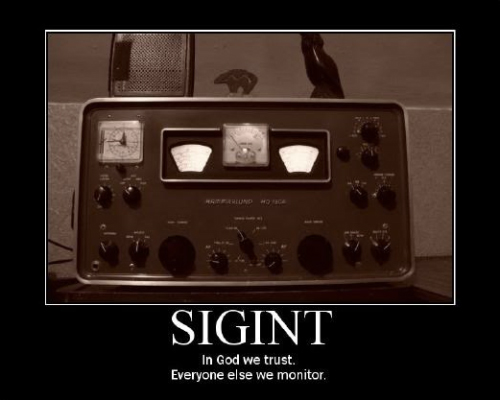
What I am adamant about telling new preppers is the need for advanced scanning capabilities, as well as the means to talk to each other and the world relatively safely.
If you, like most people, are on a budget, get your scanners and antennas first, then add your capabilities as your budget allows.
A.O.R scanners are what the US Govt buys for their frequency collection equipment. They are way outside the budget for the majority of preppers. Do not lose hope; Uniden makes two great scanners.
The Uniden models are the best scanners on the market today. They can receive Digital modes, DMR (Digital Mobile Radio) with the software upgrade, and P25 Phase 1 and 2 and MOTOTRBO, which are the most common mode of digital radio in the US. They also work with all analog frequencies your old police scanner received.
The best thing about them is your ability to program EVERY frequency I reference in the following listed radios. This is why I say get your scanners first. YOU need to know everything being passed electronically around you.

Uniden SDS100


Uniden SDS200
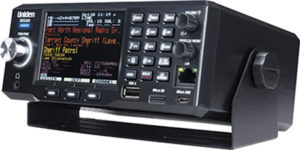
The SDS100 seems to be out of stock nationally because it is much easier to carry than the 200. This is NOT an advantage for the stationary prepper group. The 200 can use a larger and much more efficient antenna with the proper cable and adapter.
These two scanners are effectively the same, with the 100 being much more portable than the 200.
Like all communications gear, upgrading the antennas should be your priority. The only antenna I will use with the SDS200 is this one.

Sirio Antenna SD200N
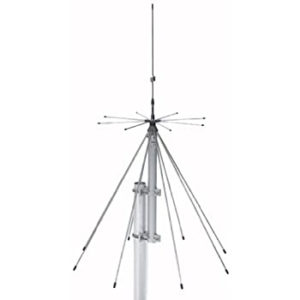
This antenna uses an N-type connector to feed the antenna, and needs an adapter to fit the rear of the scanner if you are using cables with N connectors.

Maxmoral BNC Male to N Female Adapter
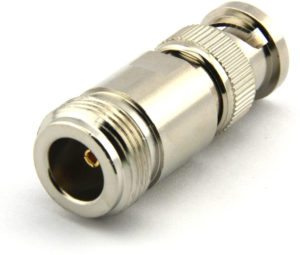

Bolton400 Cable
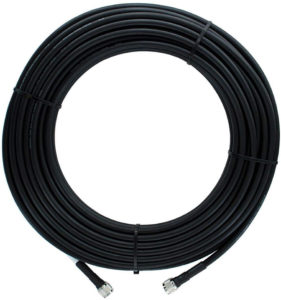
Communications options
In the following list, I am going to show you what is available without a ham license. These are just layers in your communications plan. You NEED the ability to monitor every frequency listed here. Your scanners will receive these frequencies fine once you program them.
The most commonly available is FRS/GMRS. These radios are the common “bubble pack” radios you see at Wally World. Every parent wanting to keep in contact with their kids on summer vacation has these.
FRS transmits on 0.5 watts and requires a fixed, non-changeable antenna.
GMRS can be used with a repeater, has a 5-watt limit, and antenna regulations are more in line with other radio systems. The maximum height for a repeater antenna is 60 feet.
When you buy one of these radios, it is imperative you get one with repeater capability. The other function you need is a scan function.
In learning about FRS/GMRS radios, you’ll find something called a privacy code. This is not encrypted or secure in any way. All they do is restrict what YOU hear on your channel or other radios using the same privacy code when scanning set your radio to privacy code 00, which allows you to hear every conversation regardless of privacy code transmitted on.
Then the radio will scan all 14 channels, which will allow you to hear all the transmissions in range of your radio.
Since these types of radios are so common, they are most likely to be used by others in your area and should be monitored.

Midland – MXT400
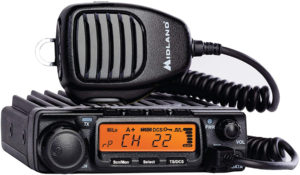
GMRS requires a license, which is $70 for five years to transmit, but the FRS frequencies do not.
A license is also not required to listen to any frequency.
I recommend having 2 of these radios, with base antennas.
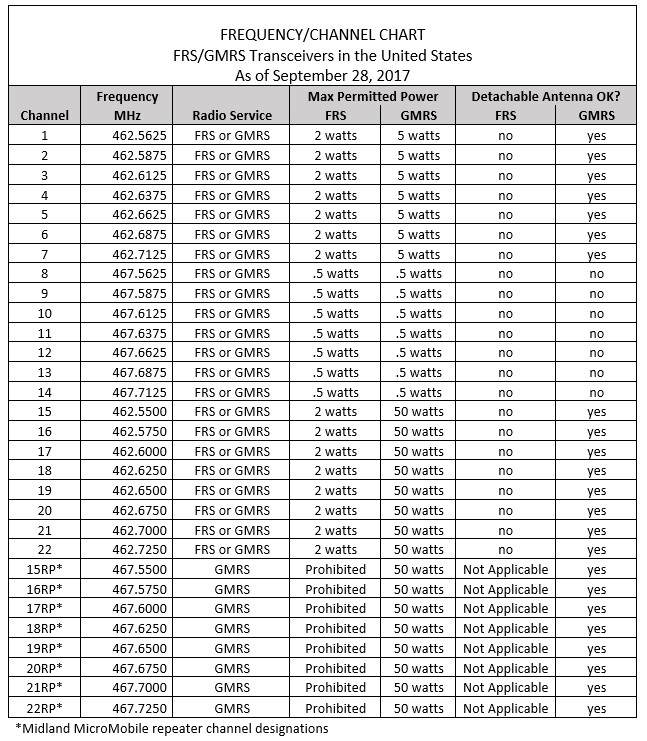
Program all of these channels into your scanner
MURS
The MURS frequencies are originally business band and now are available for anyone to use. All of the frequencies should be programmed into your scanners. There are business-specific channels that companies like Wal-Mart use, which are in this band. These could be marginally amusing in situations when you are close enough to monitor. There is also the possibility their radios could be repurposed with another group in an incident.
Wal Mart frequencies, which are also MURS- they use a PL Tone of 136.5 from the factory but can be changed locally.

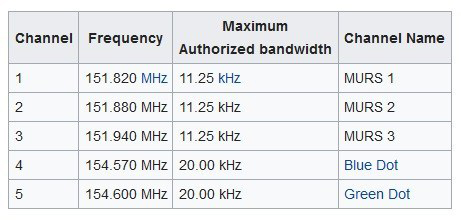
Program all these frequencies into your scanners, but do not buy radios unless your budget allows.

Uniden BEARCAT 980
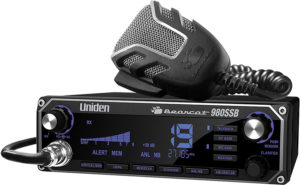
The Uniden 980 CB radio is the best CB radio on the market today. This is from my use of this and many others over the last 30 years. Unlike many radios, this radio does not drift off frequency as the radio heats up. It is also one of the only Single Side Band radios on the market. Do not buy the 880; it is strictly a 40 channel radio. An SSB radio is very important; it allows monitoring and transmitting on all of the channels and the Side Bands. This radio, you need to buy, instead of programming the frequencies into your scanner. There is so much garbage on these frequencies you really do not want to listen until needed.
You will also need a base antenna.
Do not buy an amplifier. First, if you do, it is illegal, and if it causes “Harmful Interference,” you will get reported.
The second reason is obvious after you’ve spent too much money. Just because someone can hear you four states away, doesn’t mean they can talk to you. Nor does it help you learn anything about what is happening around you. CB Radio is a local communications frequency, and good for learning what is happening around you. Anything else it does is an unreliable novelty because of the frequency band it operates in.

Sirio Antenna m400 Starduster Tunable Base
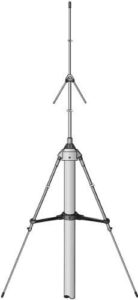
When you buy CB antennas, make sure your base antenna is not plastic or fiberglass. The elements will seriously degrade your antenna. Spend a bit more for something lasting long term.
The joy of CB radio is its local uses, not skip or other long-distance anecdotal uses. The 11-meter frequency band (CB) is one of the most reliable LOCAL communication methods. And in most areas of the US, except for the southeastern states, the band is completely barren. And even in areas where CB is still used, the side bands are mostly quiet, so you will have no trouble finding a channel. On the other hand, the majority of traffic you will hear will be local, so there is a source of information for your group you can get by listening. Some time spent monitoring will let you know what channels others in your area are using and may give you an indicator of hostile intent.
“Other” options
Marine, Aviation, and Bootleg CB specialty frequencies.
I’ve read many posts, books and listened to a bunch of people talk about how they have found “secret” frequencies no one knows about. Not really.
Marine band, which is popular in some circles, is the first you should stay far away from. Every one of those frequencies I will list is also law enforcement allocated to be used as Primary frequencies under the Patriot Act and other interoperability agreements. DHS is also the biggest user of these frequencies across the US; they aren’t just for the coast Guard and boat owners anymore.
If you or anyone else associated with you causes interference remember you were warned.
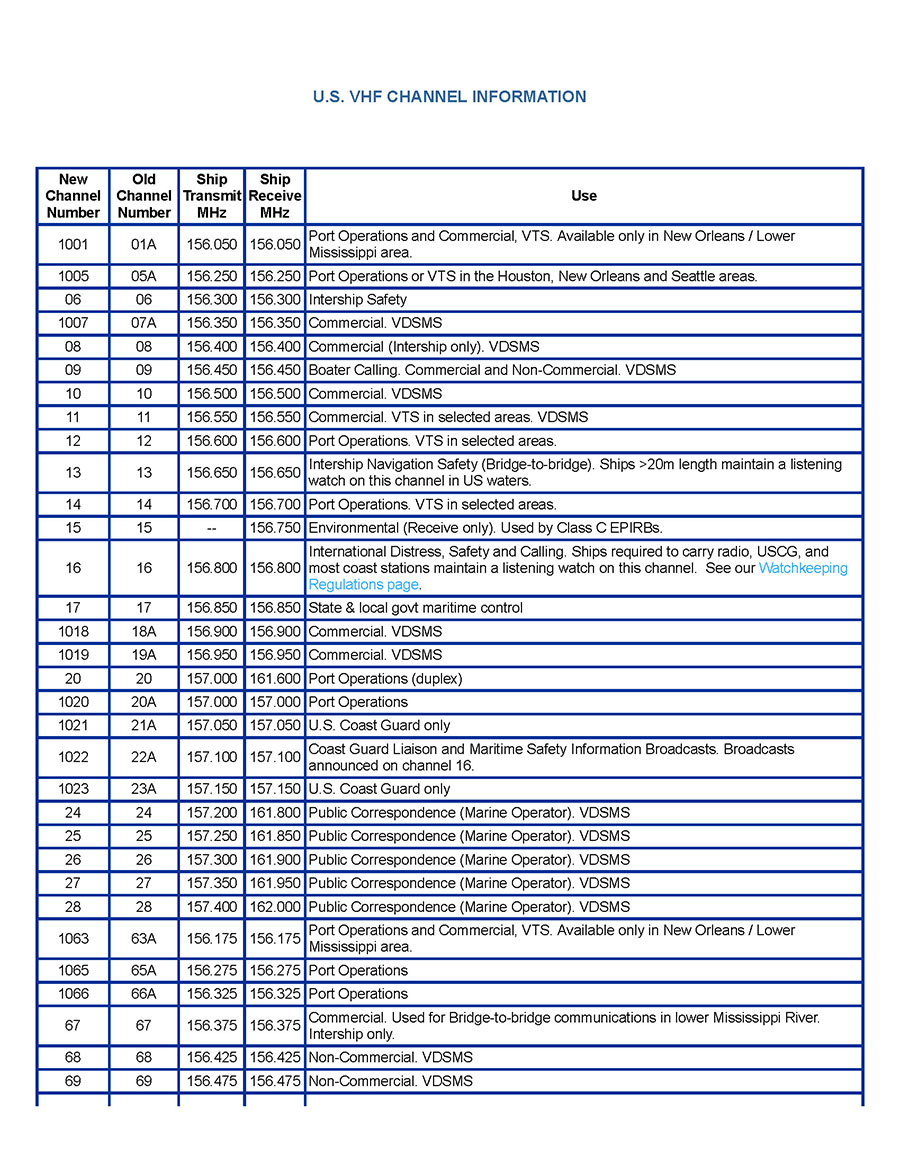
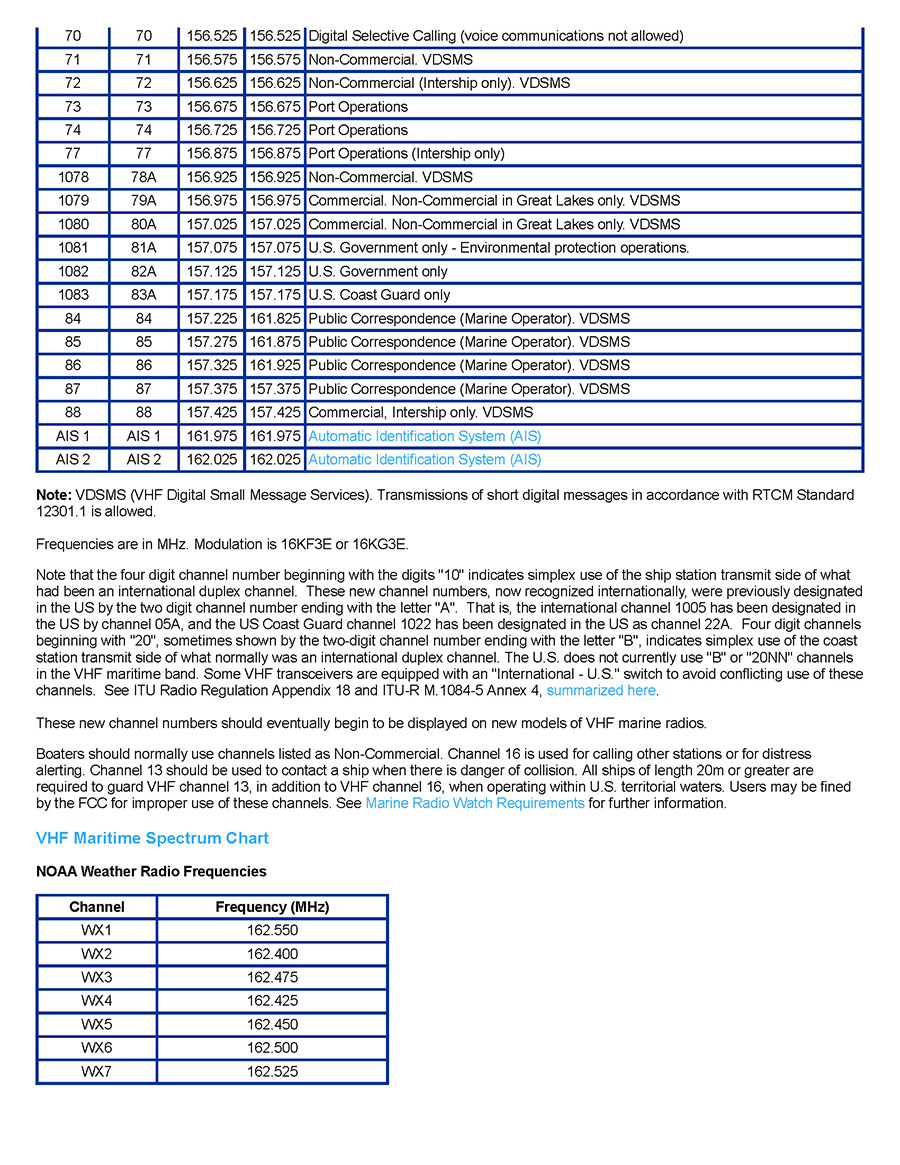
All of these frequencies should be in your scanners as well. Because so much of the US is away from water, these frequencies are thought to be unmonitored. Nothing is farther from the truth. What we care about is listening to others in our areas and what they are doing.
Aviation bands are used by aircraft and ground stations to talk to aircraft. These are also easy to program into a scanner. They are also amusing to listen too during normal day scanning if you live near a small airport. The larger airports are just boring, with the same conversation in an endless loop for each arriving and departing aircraft.
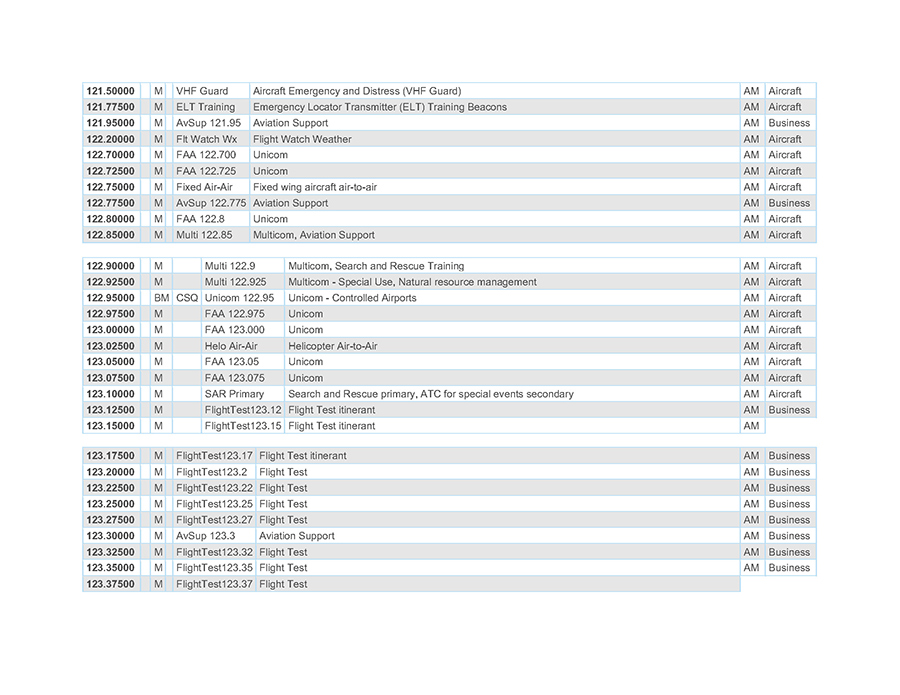

Today these frequencies are used only by aviation-related industry but need to be in your scanner memory so you can immediately identify them when you hear them.
Bootleg or split CB channels are an entire post on their own, and there are many sites online to help you find them and the frequencies. They tend to be full of garbage, kind of like the Dark Net.
Amateur Radio (ham)
Amateur radio is the most misunderstood of all radio communications in the prepping world. There are generally two arguments on the subject of ham radio.
The first is expressed by those who think they can do anything they want without a license. These are the same people who are paranoid about being on a Government list. They will further their argument by stating they can use anything they want in an emergency.
The only thing in that statement being a partial truth is the “emergency” clause. Your definition of an emergency is subject to interpretation.
What using these excuses mean is they are too lazy or belligerent to learn things which can save their lives. I suppose it’s not new, the same people have a Tourniquet and roll of gauze and call it their first aid kit.
It is the mentality they will put away communications gear until they need it. You wouldn’t put a rifle away without mounting the scope and zeroing it, would you?
And BTW, the radio is the least of your problems when you try to use it and find you don’t have the right cable and connectors to make it work.
Myths
Morse code- Code is no longer required for any class of Amateur license in the US.
The 20-50-100 mile Hand Held radio- Sorry it doesn’t exist anywhere but movies and fantasy novels. I’ve talked to Australia from Arizona on a handheld (HT); however, that is with a repeater and Voice Over Internet Protocol (VOIP), which some repeaters have the capability.
Licenses are hard to get- I teach Technician class licenses in an 8-hour class with heavy class participation. I angle the class for preppers and to pass the test. EVERY person who has taken my class has passed the Tech test first attempt. And 50% of those passed General with no further study because we cover a tremendous amount of ground in class and General is just Tech on steroids.
The question pool is published online and in print, if its what you like, just memorize the question pool.
Its full of useless information I don’t need- ham radio is like a menu in a Chinese restaurant, you pick what you want and dump the rest. Once you pass the tests to whatever class of license you want (General is needed for most of what preppers need), you select what capabilities you want and get on with life. Unless you really mess up, you only have to take the tests once to be licensed.
In an emergency, I’ll just call, and people will answer- In a word, NO. Local communications, in emergencies or not, depend on the operator. If your voice is not recognized as “One of the local boys,” you will be ignored. People hear an unknown call sign or worse someone who has no idea of proper operating protocols; they treat it just like a spam call on the cell phone. They will ignore you.
Sorry if that’s a slap to the face. In emergencies, there are enough problems already. Someone new, who doesn’t know what they are doing, is not an asset.
Radio reality
The second half of the argument is from people who actually know what they are doing.
The people who do know what they don’t know, and are moving forward to improve their capabilities and thereby safety.
Since the COVID 19 event has been happening, I have had contact with multiple people outside of Arizona, some who work in first responder positions. They are all happy to talk about what is actually happening, as opposed to what is seen on the news. Real-time, on the ground information. I’ve learned much more listening to the bands and cross-checking information with other sources. After a major event, this will be the only source of reliable information available to you and your groups.
Hopefully, when you started reading this post, you clicked on the links and ordered your books. Learning why you need this skill before everything goes to hell is your first step.
What do you and your group need?
The first thing your group needs to decide is this is no longer a game and needs to be taken seriously.
That means everyone gets at least a Technician class license.
Your comms specialists need to be at least General, but Amateur Extra would be a huge help.
My reasons behind needing a license for everyone? You need to buy everyone you think will need a radio one with tri-band capability, and able to adjust the power levels down to 0.1 watts for local communications.
In my opinion, the best handheld (HT) radio ever produced was the Yeasu VX-7. A close second is the rest of the VX family, with the VX-6 being available now.

Tri-Band Yaesu
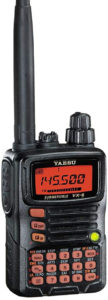
With these radios, you need a AA battery pack, as well as spare rechargeable batteries. A fast charger for the factory battery is a good idea.
Do not buy throat mics, and other things you think are tactical. Throat mics suck and are forced on the ones who use them, not selected by choice. Headsets with earpiece are a good idea, but all of them are fragile, so use sparingly. Antennas specific to each band are required. When you learn about radio, you will see why the antenna sent with a radio is usually junk and make changes to your own gear.
No, it’s not a cheap piece of junk Chinese radio made at a lower standard than the low bidder. The Baefeng/whatever name this week radios are problems and storing up trouble for later. They even suck at being scanners.
I also talked about the dangers of random transmissions and what it means to you earlier in this post. The VX6 can transmit at 0.1 watt on the 222 Mhz band; you have reliable communication, but you are not telling the world you are there. Even the cheapest FRS radios at the dollar store only go down to 0.5 watts. I have talked 15 miles on 0.5 watts. If the conditions are right and you know-how, it’s not hard.
Enough about HT radios.
The secret to ham radio is knowing how to build an antenna and knowing good from bad.
Now I’m going to talk briefly about a technique only usable in the HF bands, which require a General class license.
To the uninformed, talking 20-300 miles would seem to be the easiest distances. Nothing could be farther from the truth. The solution to this problem is called Near Vertical Incidence Skywave (NVIS).
Pay attention. You will use this later.
Some frequencies, depending on your antenna, time of day, and conditions of the ionosphere will travel straight up and bounce down around you in a cone shape 300 miles across. It is also very hard to direction find this kind of transmission.
Starting to see a use for ham radio yet?
If you aren’t careful, you might even get into things like long-distance communication using very low power radios called QRP in ham jargon.
Stealth antennas are also addictive, with no antennas showing outside your home or garage but able to be built and deployed to talk worldwide. It will also give you a new respect for operators in hostile areas, transmitting under fear of death.
Yes, you will hear them on your radio as well. Iran, North Korea, and other unfriendly places all have radio operators, with homemade gear hoping to talk to someone.
HF Radios
I am a fan of HF radios. I will say, any of the name makers, Alinco, ICOM, Kenwood, Yaesu, Elecraft, and a multitude of others make amazing radios, and I would be happy, as well as grateful to have any of their high-end radios. To appreciate how good these manufacturers are, you have to get experience, and that comes with being in your local radio club. All clubs have radios for you to learn on and learn what features you want in your radio.
I will show from my wish list radios I have and want to upgrade too.
The first is an oddity in prepper communications. Most want a semi-portable radio system for a “bug-out.” If you are prepped for the long term, you aren’t “bugging out” without a semi-truck.

Yaesu Original FT-450D
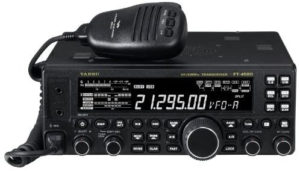
This radio is roughly the same price as the 857D made by Yeasu, which is the default preppers HF radio. But the 450 has a much better receiver, and paired with the 818 below makes an excellent combination for your group.
Save money in this hobby/lifestyle and learn about magnetic loop antennas. You really can do it all with a bank of mag-loops and this radio. Those and a Di-pole for NVIS, and you are set. Most of which can be built from your local hardware store.
For portable HF use, but very low power. Do not buy the 818 as your first HF radio. You will be frustrated and want to give up. It is better to gain confidence in your antennas and operating abilities with a higher-powered radio first.
What also is a huge help is operating both these radios side by side with their own antenna, so you see the difference in actual use.

Yaesu FT-818
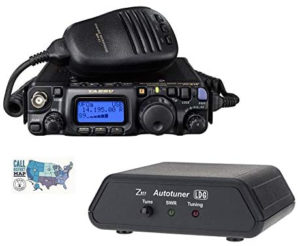
Tuners are not necessary with a resonant antenna but helpful if all you have is a piece of wire. Yes, you can do it with a long piece of wire.
One of the best options for portable HF antennas is this. You can build your own but try not to compound your options for problems. Learn one skill than another, don’t try to experiment with everything (radios, tuners, and antennas) all at once.
The Good Idea fairy is as dangerous to your wallet with radio as firearms are. You were warned.

Super Antenna MP1LXMAX
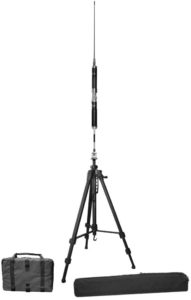
Conclusion
I’m sure, at this point, you are a bit overwhelmed. I understand why, and I wish when I was starting, I’d had an article series like this to point me in the right direction without spending money in the wrong places.
Prepping is very hard without knowledge first. And the high emotional responses from family members never helps. Having your preps ready gives you the quiet calm your close associates can see and have confidence you can handle things when it gets rough.
I hope this has helped you get a reasonable start on your preparations, and to see how to get back on track.
Check out more in our Blog section.
Want more posts like this one? Subscribe to Guns & Tactics to receive email updates and special offers direct to your inbox!
Social Links:
– The views and opinions expressed on this web site are solely those of the original authors and contributors. These views and opinions do not necessarily represent those of Guns & Tactics, the administrative staff, and/or any/all contributors to this site.
– Affiliate Disclaimer: Guns and Tactics is reader/viewer supported. This post may contain affiliate links and we may earn a small commission when you click on the links at no additional cost to you. As an Amazon Affiliate I earn from qualifying purchases.













You are one of very few folks that I have read that share similar ideology about preparedness. And this communications part is so right on – it’s good! Keep writing! Semper Fidelis!
This is the most informative blog I have ever found. Great